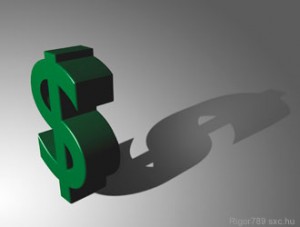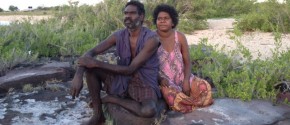In recent times the word “poverty” has been used broadly to refer to the situation in many remote Indigenous Communities in Australia. For most people poverty means a serious lack of money or material needs and it conjures images of the poor from 3rd world slums. This is problematic because it can produce a tendency to import solutions that work in the developing world without adequately analysing them. The Indigenous peoples of Australia face very different situations. So if the media must use this word, I think it is worth stepping back and considering what Indigenous “poverty” has in common with the situation of the worlds poor. And if there are similarities what does this tell us about how “Indigenous poverty” can be overcome.
What is poverty?
In a recent interview with Andrew Denton on the ABC TV show Elders, Muhammad Yunis, founder of the worlds first micro-credit bank, the Grameen Bank, shared his thoughts about what poverty is:
“Poverty, is almost, you can describe is a living in a box, all with the thick wall, no window, no door, no light, so you don’t know what’s coming next, you have no idea of new day starting in different way, you repeat the same thing over and over again. No hope, basically. So you try to survive the day in very uncertain conditions. So that’s poverty, you have no control over your life, that’s total, that’s it.”(Muhammad Yunis, Elders Episode 7 December 2009, transcript of interview with Andrew Denton http://www.abc.net.au/tv/elders/transcripts/s2757468.htm)
This description makes no reference to poverty being a lack of money, but refers to an experience of oppression and the deeper issue of a lack of control over your life.
This next description comes from a senior Yolŋu Elder from north east Arnhem Land. It highlights the similar experience faced by Yolŋu – a lack of control.
“What has happened to us is like riding a horse. I am on this horse and the horse is galloping. It is galloping through the forest, it has these blinkers on, it cannot see exactly where it is going, but the horse is swerving. The problem is that I do not have control of the reins; someone else is controlling it. That is what my life is like. Sometimes I am terrified that the horse is going to run into a tree and I will be knocked off by a bough but I have no control of where I am going or what I am doing.” (quoted by John Greatorex during the ‘Senate Select Committee on Indigenous and remote Communities’, 22/05/09, transcript http://culturalsurvival.org.au/mapuru.html)
Muhammad Yunis began his work in Bangladesh, where the concept of micro credit was radical and powerful in alleviating poverty, because it gave people back control in their lives. It has now been applied more broadly in many third world countries overseas. Is it possible that a tool like micro-credit could be applied in Arnhem Land to alleviate “poverty”? I know many people who believe that approaches that work in 3rd world countries overseas can be applied in Australian Indigenous situations also, and forms of micro-credit have been attempted on several occasions. I think we need to take a bit of a closer look at why micro-credit works in the 3rd world.
When Muhammad Yunis first set out in Bangladesh to help alleviate poverty, he looked for someone in need;
“So I see a woman very poor wearing torn clothes and things and sitting in front of a terrible house, doesn’t look like a house, it’s just a shed with the broken pieces of things and she’s making bamboo stool. She has beautiful bamboo stool in front of her, so suddenly it comes to my mind, what kind of contrast between her house and her clothes and her face and this beautiful newly made bamboo stools. And she explains to me that she makes very little, she makes only two penny a day. I couldn’t believe why anybody would make two penny a day making this, and the reason she gave me because she didn’t have the money to buy the bamboo that goes into the bamboo stool. She had to borrow from the trader to buy the bamboo. So I said, “How much is the bamboo? It must be very expensive if you can’t afford to buy the bamboo”, she said, “It cost about 25 cents and I didn’t have the 25 cents so I have to borrow from the trader”. And under the terms of the loan she has to sell the products to him exclusively and accept the price that he offers, she can not compare with anybody else. So I said, my god, she has become a slave labour for him, for such a small amount of money she had to sacrifice everything.” (Muhammad Yunis, Elders Episode 7 December 2009)
So Muhammad went and talked with some of those in “poverty” and was able to identify what was the limitation to them breaking free from their “poverty”. The underlying problem was a lack of access to credit, which made people prey to “loan sharks” who were able to impose incredibly unjust terms on their loans, keeping their income so low that people were trapped, and never able to break out of this cycle. And thus the concept of micro-credit was born. By providing very small sums of money to people, with just terms, people were given the opportunity to break free from the debt cycle and have control over their income.
Does such a solution fit in Arnhem Land? I believe not. The same issue of lack of control exists in Arnhem Land, but there are no signs of predatory money lenders here that people become dependent on. While some Indigenous people can be taken advantage of in financial areas, a lack of access to credit is not a major limitation. Grants, loans and standard credit options are available. We have to look a bit deeper into the peoples real situations to determine the limitations that cause injustice in these communities. Who/what are the “loan sharks” here that prevents people from being able to break out of cycles of “poverty”. I believe the situations for Indigenous communities are very different, but the principals are the same … the solutions must be custom made.
The principals that I believe apply here in Arnhem Land also;
- “Poor” people have worth and ability- when Muhammad Yunis looked at that woman with her bamboo stool, he saw the conditions that she lived in, but he also saw her skills in craftsmanship. She was thus not a poor person to be pitied and rescued with handouts, she was someone with ability, who was facing specific barriers that needed to be overcome for her to succeed and achieve independence and control.
- You should not blame a poor person for their plight; “Poverty is not created by the poor people. It is not their fault that they are poor. Poverty is created by the system, imposed on good blooded human beings and we can peel it off.” (Muhammad Yunis, Elders Episode 7 December 2009)
- Limitations or Limit conditions. There are underlying conditions or sets of situations that cause or initiate the cycle of “poverty”, oppression or dependency. In the above example, a lack of income combined with a lack of availability of loans, made people prey to dodgy dealers. For Indigenous communities the limit situations they face are different. By addressing these limits we can enable people to overcome them.
- The existence of “Sharks”. The fact that people are stuck in a cycle of “poverty” means that there are “sharks” or systems that are perpetuating the oppression cycle. These systems need to be identified and negated to free people from the cycle.
If access to small loans with just terms is not the problem for remote Indigenous Australians, then micro credit is not going to overcome the causes of “poverty” in Arnhem Land. Australia is a very different country to Bangladesh. We have a welfare system providing basic income to those without work as well as grants and small business loans.
When we use the word “poverty” in relation to Indigenous people, often what people hear, is ‘lack of money’, and therefore assume the solution is to give money. Also people look at how well micro-credit works in developing nations and they consider that the money is what solved the problem. I believe what actually solved the problem, is that the specific cause of injustice in the system was targeted, and overcome in a way that gave people control back. Particularly in Indigenous communities a lack of money is not the cause of poverty, and therefore money is not the solution. We need to look more deeply to identify the limit conditions and predatory systems operating in specific regions to identify what is preventing Aboriginal and Torres Strait Island people from gaining control over their particular circumstances, rather than trying to import solutions from elsewhere.




บุหรีไฟฟ้า •
Hurrah, that’s what I was seeking for, what
a stuff! existing here at this web site, thanks
admin of this site.
Joyce •
I enjoyed reading this article, Indigenous people were never in poverty until the white men invaded Sydney in 1788. That’s when everything changed for the life of our Indigenous community. They lived off the land and the sea, they survived without having to have any money, They are the first Australians who lead and have control over this land, poverty was introduced by white men!
Predatory systems maintaining Indigenous disadvantage: Some examples By Tim Trudgen « Development & Globalization •
[…] the previous article ‘Understanding Indigenous Poverty: making it “history”‘, we proposed that Indigenous “poverty” in remote communities was similar to ‘conventional’ […]
Predatory systems maintaining Indigenous disadvantage: Some examples •
[…] the previous article ‘Understanding Indigenous Poverty: making it “history”‘, we proposed that Indigenous “poverty” in remote communities was similar to […]
wayne nean •
Very well done. Indigenous people today are required to live like the white man. Thats understandable, as they control the purse strings inwhich we survive. We had, had no fridges to store food away. When we wanted a feed we would go and find it. Today we are required to be robotic and time managed like the white man. We have a death in the family, we are not given time to grieve, the white man says, get over it, you have no the time to grieve. This situation is very hard to comprehend, coming from them. Death to them is trying to out live each other. The devil in the making.
Daniel Prokop •
Very thought provoking article, thank you, perhaps similarities with Indigenous Americans? Look forward to your next article
Tim Trudgen •
Thanks Alan,
We hope to post something about the limit conditions and predatory systems in next article very soon.
Alan •
Thank you for a very interesting article. Could you please provide some examples of what you believe could be limit conditions and predatory systems within our indigenous communities.
Melanie Pyrah •
Very well written article, I totally agree! The indigenous people of Australia have so much to teach us, so much richness, but it is not often appreciated or able to shine. I guess their poverty is one of identity and hope.